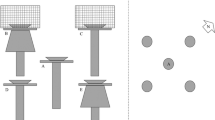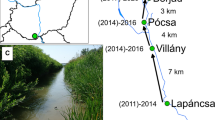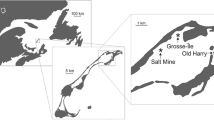Abstract
Most studies of biological invasions refer to the human role in species dispersal but the importance of ectozoochory has scarcely been studied. Thus, we investigated whether the first alien amphipod species found in the Iberian Peninsula, North American Crangonyx pseudogracilis can be dispersed by waterfowl. To do this, we showed experimentally that the amphipod may cling to the plumage and legs of a mallard duck (Anas platyrhynchos) and be transported under controlled laboratory conditions. The probability of the amphipods being transported on duck’s plumage or feet is 1.84 and 1.6%, respectively. Another experiment showed that C. pseudogracilis may stay attached to a flying duck and survive during its flight for a distance of 6.8 km. In addition, we found that this invader can stay alive with a LT90 of 88.6 min when exposed to desiccation. Thus, we conclude that C. pseudogracilis may be successfully transported by the waterfowl for short distances to other waterbodies. Thus, ectozoochory may be an important way of spreading the amphipods in areas where the hydrological network is poorly developed and not interconnected with artificial canals.




Similar content being viewed by others
References
Alcaraz, C., A. Vila-Gispert & E. García-Berthou, 2005. Profiling invasive fish species: the importance of phylogeny and human use. Diversity and Distributions 11: 289–298.
Allen, F. H., 1939. Effect of wind on flight speed. The Auk 5: 291–303.
Allendorf, F. W. & L. L. Lundquist, 2003. Introduction: population biology, evolution, and control of invasive species. Conservation Biology 17: 24–30.
Anastácio, P. M., C. Correia & P. Gonçalves, 2010. Crayfish (Procambarus clarkii) survival time out of water and its implications for overland dispersion. In Abstract of a Poster Presentation “European Crayfish: Food, Flagships and Ecosystem Services”, 26–29 Oct 2010, Poitiers.
Arzel, C. & J. Elmberg, 2004. Time use, foraging behavior and microhabitat use in a temporary guild of spring-staging dabbling ducks (Anas spp.). Ornis Fennica 81: 157–168.
Bacela-Spychalska, K., M. Grabowski, T. Rewicz, A. Konopacka & R. Wattier, 2013. The “killer shrimp” Dikerogammarus villosus (Crustacea, Amphipoda) invading Alpine Lakes: overland transport by recreational boats and scuba-diving gear as potential entry vectors? Aquatic Conservation: Marine & Freshwater Ecosystems. doi:10.1002/aqc.2329.
Banha, F. & P. Anastacio, 2012. Waterbird-mediated passive dispersal of river shrimp Athyaephyra desmaresti. Hydrobiologia 694: 197–204.
Berthold, E. & I. Kaiser, 2004. Weitere Funde von Crangonyx pseudogracilis und Chelicorophium robustum (Amphipoda) im Main. Lauterbornia 50: 15–17.
Bij de Vaate, A., K. Jazdzewski, H. Ketelaars, S. Gollasch & G. Van der Velde, 2002. Geographical patterns in range extension of macroinvertebrate Ponto-Caspian species in Europe. Canadian Journal of Fisheries and Aquatic Sciences 59: 1159–1174.
Bilton, D. T., J. R. Freeland & B. Okamura, 2001. Dispersal in freshwater invertebrates. Annual Review of Ecology and Systematics 32: 159–181.
Bruderer, B. & A. Boldt, 2001. Flight characteristics of birds: I. Radar measurements of speeds. Ibis 143: 178–204.
Clausen, P., B. A. Nolet, A. D. Fox & M. Klaassen, 2002. Long-distance endozoochorous dispersal of submerged macrophyte seeds by migratory waterbirds in northern Europe—a critical review of possibilities and limitations. Acta Oecologica 21: 191–203.
Claussen, D. L., R. A. Hopper & A. M. Sanker, 2000. The effects of temperature, body size, and hydration state on the terrestrial locomotion of the crayfish Orconectes rusticus. Journal of Crustacean Biology 2: 218–223.
Colautti, R. I., I. A. Grigorovich & H. J. MacIsaac, 2006. Propagule pressure: a null model for biological invasions. Biological Invasions 8: 1023–1037.
Cramp, S. & K. E. L. Simmons, 1977. Handbook of the Birds of Europe, the Middle East and North Africa, Vol. 1. Oxford University Press, Oxford.
Daborn, G. R., 1976. Colonisation of isolated aquatic habitats. Canadian Field Naturalist 90: 56–57.
Darwin, C., 1859. On the Origin of Species by Means of Natural Selection. John Murray, London.
Darwin, C., 1878. Transplantation of shells. Nature 18: 120–121.
Engelkes, T. & N. J. Mills, 2011. A conceptual framework for understanding arthropod predator and parasitoid invasions. BioControl 56(4): 383–393.
Figuerola, J. & A. J. Green, 2002a. Dispersal of aquatic organisms by waterbirds: a review of past research and priorities for future studies. Freshwater Biology 47: 483–494.
Figuerola, J. & A. J. Green, 2002b. How frequent is external transport of seeds and invertebrate eggs by waterbirds? A study in Donana, SW Spain. Archiv für Hydrobiologie 155: 557–565.
Frisch, D., A. J. Green & J. Figuerola, 2007. High dispersal capacity of a broad spectrum of aquatic invertebrates via waterbirds. Aquatic Sciences 69(4): 568–574.
Garland, E. M., 1981. The Colonization of Windermere by Crangonyx pseudogracilis (Crustacea, Amphipoda) 1961 to 1964, Vol. 12. Occasional Publication. Freshwater Biological Association, Ambleside: 13 pp.
Gledhill, T., D. W. Sutcliffe & W. D. Williams, 1993. British Freshwater Crustacea Malacostraca: A Key with Ecological Notes, Vol. 52. Scientific Publication. Freshwater Biological Association, Ambleside: 1–173.
Grabowski, M., K. Bacela & A. Konopacka, 2007. How to be an invasive gammarid—comparison of life history traits. Hydrobiologia 590: 75–84.
Grabowski, M., M. Rachalewski, F. Banha & P. Anastacio, 2012. Crangonyx pseudogracilis Bousfield, 1958—the first alien amphipod crustacean in freshwaters of Iberian Peninsula (Portugal). Knowledge and Management of Aquatic Ecosystems 404(11): 1–5.
Green, A. J. & J. Figuerola, 2005. Recent advances in the study of long-distance dispersal of aquatic invertebrates via birds. Diversity and Distributions 11: 149–156.
Guerao, G., 2003. Some observations on the life history of the freshwater amphipod Echinogammarus longisetosus Pinkster, 1973 (Gammaridae) from Catalonia (Spain, N Iberian peninsula). Animal Biodiversity and Conservation 26(1): 31–39.
Hänfling, B., F. Edwards & F. Gherardi, 2011. Invasive alien crustaceans: dispersal, establishment, impact and control. BioControl 56: 573–595.
Havel, J. E. & J. B. Shurin, 2004. Mechanisms, effects, and scales of dispersal in freshwater zooplankton. Limnology and Oceanography 49: 1229–1238.
Hermoso, V., M. Clavero, F. Blanco-Garrido & J. Prenda, 2011. Invasive species and habitat degradation in Iberian streams: an analysis of their role in freshwater fish diversity loss. Ecological Applications 21(1): 175–188.
Holsinger, J. R., 1977. A review of the systematics of the Holarctic amphipod family Crangonyctidae. Crustaceana Supplement 4: 244–281.
Holsinger, J. R. & G. W. Dickson, 1977. Burrowing as a means of survival in the trogloditic amphipod crustacean Crangonyx antennatus Packard (Crangonyctidae). Hydrobiologia 54: 195–199.
Hulme, P. E., 2009. Trade, transport and trouble: managing invasive species pathways in an era of globalization. Journal of Applied Ecology 46: 10–18.
Hume, R., 2009. RSPB Complete Birds of Britain and Europe. Dorling Kindersley, London.
Jazdzewski, K., 1980. Range extensions of some gammaridean species in European inland waters caused by human activity. Crustaceana Supplement 6: 84–107.
Karatayev, A. Y., L. E. Burlakova, D. K. Padilla, S. E. Mastitsky & S. Olenin, 2009. Invaders are not a random selection of species. Biological Invasions 11: 2009–2019.
Kirkpatrick, A. J., A. Gerhardt, J. T. Dick, P. Laming & J. A. Berges, 2006. Suitability of Crangonyx pseudogracilis (Crustacea: Amphipoda) as an early warning indicator in the multispecies freshwater biomonitor. Environmental Science and Pollution Research International 13(4): 242–250.
Krementz, D. G., K. Asante & L. W. Naylor, 2011. Spring migration of mallards from Arkansas as determined by satellite telemetry. Journal of Fish Wildlife Management 2(2): 156–168.
Larson, E. R., D. D. Magoulick, C. Turner & K. H. Laycock, 2009. Disturbance and species displacement: different tolerances to stream drying and desiccation in a native and an invasive crayfish. Freshwater Biology 53: 1899–1908.
Leeuwen, C. H. A., G. Velde, B. Lith & M. Klaassen, 2012. Experimental Quantification of long distance dispersal potential of aquatic snails in the gut of migratory birds. Plos One 7(3): 1–7.
Legagneux, P., C. Blaize, F. Latraube, J. Gautier & V. Bretagnolle, 2009. Variation in home-range size and movements of wintering dabbling ducks. Journal of Ornithology 150: 183–193.
Maguire, B. Jr., 1963. The passive dispersal of small aquatic organisms and their colonization of isolated bodies of water. Ecological Monographs 33: 161–185.
Morritt, D., 1987. Evaporative water loss under desiccation stress in semiterrestrial and terrestrial amphipods (Crustacea: Amphipoda: Talitridae). Journal of Experimental Marine Biology and Ecology 111: 145–157.
Ninyerola, M., X. Pons & J. M. Roure, 2005. Atlas Climático Digital de la Península Ibérica. Metodología y aplicaciones en bioclimatología y geobotánica. Universidad Autónoma de Barcelona, Bellaterra.
Olson, S. L. & A. Feduccia, 1980. Presbyornis and the origin of the Anseriformes (Aves: Charadriomorphae). Smithson Contributions to Zoology 323: 1–24.
Oscoz, J., P. Tomás & C. Durán, 2010. Review and new records of non-indigenous freshwater invertebrates in the Ebro River basin (Northeast Spain). Aquatic Invasions 5: 263–284.
Pinkster, S. 1993. A Revision of the Genus Echinogammarus (Stebbing, 1899) with Some Notes on Related Genera. Memorie del Museo civico di storia naturale di Verona, IIa Serie A, Biologica, Sezione Scienze della vita.
Pinkster, S., J. Dieleman & D. Platvoet, 1980. The Present Position of Gammarus tigrinus Sexton, 1939, in the Netherlands, with the Description of a Newly Discovered Amphipod Species, Crangonyx pseudogracilis Bousfield, 1958 (Crustacea, Amphipoda), Vol. 7. Bulletin. Zoologisch Museum, Universiteit van Amsterdam: 33–45.
Pöysä, H., 1983. Resource utilization pattern and guild structure in waterfowl community. Oikos 40: 297–307.
Poznańska, M., T. Kakareko, M. Krzyżyński & J. Kobak, 2012. Effect of substratum drying on the survival and migrations of Ponto-Caspian and native gammarids (Crustacea: Amphipoda). Hydrobiologia 700: 47–59.
Prange, H. D. & K. Shmidt-Nielsen, 1970. The metabolic cost of swimming in ducks. Journal of Experimental Biology 53: 763–777.
Reid, J. W. & E. B. Reed, 1994. First record of two Neotropical species of Mesocyclops (Copepoda) from Yukon territory: cases of passive dispersal? Arctic 47: 80–87.
Rodrigues, D. J. C., A. M. D. Fabião, M. E. M. A. Figueiredo & P. J. Q. Tenreiro, 2000. Migratory status and movements of the Portuguese Mallard Anas platyrhynchos. Vogelwarte 40: 292–297.
Rosine, W. N., 1962. New evidence of the transport of freshwater amphipoda by waterfowl. Proceedings of the South Dakota Academy of Science 41: 198.
Segerstråle, S. G., 1954. The freshwater amphipods Gammarus pulex (L.) and Gammarus lacustris (Sars) in Denmark and Fennoscandia—a contribution to the late and post-glacial immigration history of the aquatic fauna of northern Europe. Societas Scientiarum Fennica Commentationes Biologicae 15: 1–91.
Silfverberg, H., 1999. A provisional list of Finnish Crustacea. Memoranda Societatis pro Fauna et Flora Fennica 75: 15–37.
Svensson, L., K. Mullarney & D. Zetterström, 2009. Birds of Europe, 2nd ed. Princeton University Press, Princeton.
Tittizer, T., F. Schöll, M. Banning, A. Haybach & M. Schleuter, 2000. Aquatische Neozoen im Makrozoobenthos der Binnenwasserstraßen Deutschlands. Lauterbornia 39: 1–72.
Tsai, M. L., J. J. Li & C. F. Dai, 2000. Is large body size always advantageous for terrestrial adaptation? A study of water balance in a semi-terrestrial crab, Sesarmops intermedium (Crustacea: Grapsidae). Evolutionary Ecology 14: 61–78.
Vanschoenwinkel, B., S. Gielen, M. Seaman & L. Brendonck, 2008. Any way the wind blows, frequent wind dispersal drives species sorting in ephemeral aquatic communities. Oikos 117: 125–134.
Zavaleta, E. S., R. J. Hoobs & H. A. Mooney, 2001. Viewing invasivespecies removal in a whole-ecosystem context. Trends in Ecology and Evolution 8: 454–459.
Zhang J. & J. R. Holsinger, 2003. Systematics of the Freshwater Amphipod Genus Crangonyx (Crangonyctidae) in North America. Memoir Number 6. Virginia Museum of Natural History, Martinsville: 274.
Acknowledgments
This study was partially financed by FEDER funds through the “Programa Operacional de Factores de Competitividade—COMPETE” and by national funds through “FCT—Fundação para a Ciência e Tecnologia” on the scope of the project DID (Dispersal of Invasive Decapoda) (PTDC/BIA-BEC/105182/2008). All the experiments with use of the mallard ducks were performed in accordance with the Portuguese law. We thank the Veterinary Hospital of the University of Évora for the cooperation in the preparation of the experiments.
Author information
Authors and Affiliations
Corresponding author
Additional information
Handling editor: Chris Joyce
Rights and permissions
About this article
Cite this article
Rachalewski, M., Banha, F., Grabowski, M. et al. Ectozoochory as a possible vector enhancing the spread of an alien amphipod Crangonyx pseudogracilis . Hydrobiologia 717, 109–117 (2013). https://doi.org/10.1007/s10750-013-1577-7
Received:
Revised:
Accepted:
Published:
Issue Date:
DOI: https://doi.org/10.1007/s10750-013-1577-7




